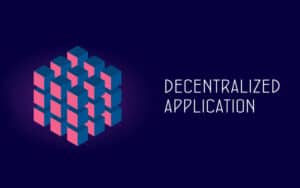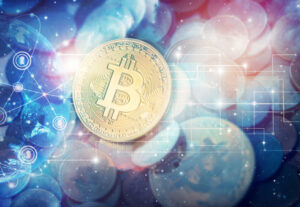Web 3.0 is the next-generation version of the Internet. It is envisioned to use artificial intelligence (AI) systems that can run smart programs to help users do more. Essentially, it can process information with augmented human-like intelligence.With the advent of Web 3.0, a new level of decentralization has been introduced to the Internet. Blockchain technology, artificial intelligence, cryptocurrencies, and metaverses will play a growing role in Web 3.0 apps and services. People can expect personalized content and the power to control their own data.
Data will be connected in a decentralized manner, which would mark a significant improvement over the present internet generation (Web 2.0), in which data is primarily held in centralized repositories. The data will be accessible to both humans and machines, allowing them to engage with it with greater ease. For this to happen, programs must be able to comprehend information in both a conceptual and contextual sense.
Users can intelligently communicate and collaborate with one another through the use of this network without having to bother about centralized and data-specific repository infrastructure.
Demystifying Web 3.0 misconceptions
With Web 3.0, many people falsely believe that it’s all about using blockchain technology. When it comes to how we interact and connect online, Web 3.0 involves a wide range of changes.
Institutions and organizations are experimenting with Web 3.0’s augmented and virtual reality (AR/VR) features. The metaverse, as well as other alternate realities, are being studied extensively, despite the fact that they are not all the same. By fusing our physical and digital worlds, augmented reality and virtual reality (VR) are redefining how we interact with the internet.
Web 3.0 investment options
Blockchain protocols
Starting with crypto-based investments in blockchain protocols is a fantastic place to begin. A blockchain is a digital public ledger that supports the viewing and dissemination of information but prevents inauthentic alterations. Since it can be verified and authenticated, it is a very useful tool in a wide variety of fields.
Investing in this manner provides access to a wide range of financial products, as well as a strong fiat entryway into the crypto realm.
Cryptocurrencies such as Bitcoin and the numerous other protocols that derived from it have the potential to fundamentally disrupt the digital environment as we now know it.
DeFi yield farming
It is only recently that the phenomenon of decentralized finance (DeFi) has gained popularity, thanks to the Ethereum network’s capabilities. Debt and equity lending are the primary functions of DeFi today, but the industry is rapidly expanding.
DeFi is a series of smart contracts that may be used to execute financial operations, such as lending and selling cryptocurrencies. There are smart contracts on Ethereum’s blockchain, unlike Bitcoin, which can only send and receive information about the number of coins one owns.
If you want to use DeFi, you don’t have to give anyone else access to your personal information. DeFi applications are currently available to everyone with an Ethereum wallet.
It’s best to go with DeFi coins that have a lot of liquidity and a lot of money invested in them. It is riskier to invest in coins with small market capitalization and low liquidity.
When lending tokens to the liquidity pool, lenders typically seek to make a profit through interest. Loans on DeFi typically require borrowers to guarantee their loans with cryptocurrency worth more than their actual loan amount.
In most DeFi initiatives, staking benefits come in the form of governance tokens that may either be held as voting rights or traded. The longer an investor locks in their DeFi investments, the more they earn.
In order to optimize returns, you can opt for yield farming. It is a more complicated investment technique that involves lending, borrowing, and staking. DeFi yield farming is a risky endeavor, but it may generate some of the biggest returns.
DApps
Rather than relying on centralized servers, decentralized applications (dApps) run on networks of peers and distributed ledger technologies (blockchains). The majority of these operate on the Ethereum network, allowing digital contracts between entities to self-execute when certain circumstances are met. These are known as smart contracts.
Gaming, medical care, governance, and procurement of goods are examples of aspects of our daily lives that can benefit from aApps. In essence, using dApps isn’t all that different from using regular apps. Even if all the changes on the backend will benefit users, the actual experience should remain the same for all users.
The interaction between decentralized information and applications is a key characteristic of Web 3.0. These applications support millions of dollars worth of transactions each day, translating to about $182 billion annually. For investors, dApps provide new methods to take advantage of the tax advantages of art contributions, borrow and lend crypto, generate a fixed income, or invest in altcoins in the expectation of capital appreciation.
It is because of their capacity to interface with decentralized finance that dApps have become so popular. They have enabled the provision of services that were previously only available to wealthy investors to the general public.
NFTs
NFTs are unique pieces of digital items that can represent everything from artwork to video music to even real estate. As limited editions, NFTs include serial numbers that can only be used by the item’s original owner or the person who purchased the asset.
Because of their uniqueness, you cannot swap NFTs. In the same manner, you can change a dollar for a dollar of a cryptocurrency for another.
In addition, you cannot trade NFTs on DEXes or CEXes like conventional cryptocurrencies. They are actually listed and exchanged on specialized NFT art platforms and in online galleries that cater exclusively to them.
NFTs have become so popular on the investment front because of the mind-boggling amounts of money that some of these assets can fetch. In 2021, for example, renowned art auction house Christie’s sold an NFT for a record-breaking $69.3 million. In addition to their sale potential, NFTs can be programmed to allow the original owner to get a cut from any subsequent sales.
In summary
Web 3.0 (or a third generation of the internet) is a concept envisioned to encompass the next wave of internet innovations. It includes blockchain technology, cryptocurrencies, and related elements like DeFi, NFTs, dApps, among others. It is a fairly new concept, and therefore investors should take extra care before investing in them. This article has shared useful (but not exhaustive) aspects of Web 3.0 and how you can invest in them.



